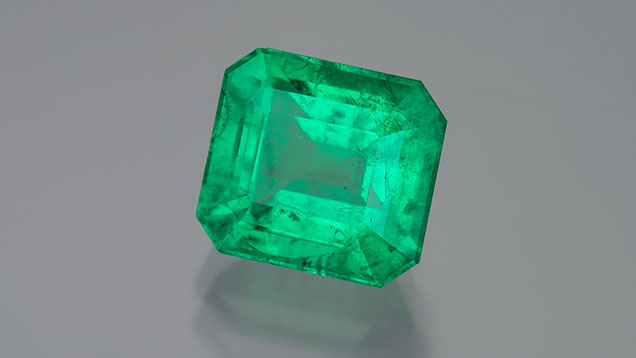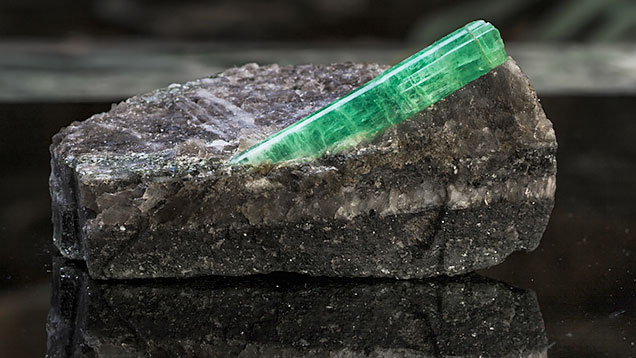Rare Emerald from China and Pink Sapphire from Sri Lanka

At the AGTA show, David Nassi of 100% Natural Ltd. (New York) showed the authors a 5.06 ct bright yellowish green emerald from China’s southwestern Yunnan province. The stone had some eye-visible inclusions, mainly fissures (figure 1). Other than a few tiny chips along the girdle, the cut gave the emerald a very elegant appearance. Mr. Nassi purchased the stone from a reliable Thai gem dealer who bought it from a Pakistani merchant who obtained it along the China-Pakistan border. Since Mr. Nassi is a cutter who deals with many antique jewelry pieces mounted with stones, he usually recuts stones before selling them. He kept this emerald “as is” due to the superb quality and size for this specific source. The stone was certified by the American Gemological Laboratory as without oil treatment, with China as the country of origin.
China’s only economically viable emerald deposit is located in Malipo County in Yunnan province. The deposit was first discovered in the early 1990s but has never been extensively prospected or mined. Emerald specimens and crystals are extracted as the byproduct of the tungsten and tin deposit. Geologically, the ore body occurs in a core complex and is related to granitic intrusions in that area. Geochemical studies revealed that the trace element vanadium concentration is about one magnitude higher than that of chromium, indicating that V is the predominant chromophore in Yunnan emerald.
The size and quality of this emerald are rare for Yunnan. Since the stones contain abundant fissures, most of the production is sold as mineral specimens or ornamental pieces (figure 2). A very small percentage can be faceted for jewelry. As the local government pays more attention to this emerald resource, new development and further exploration are expected.

Mr. Nassi also showed us an intensely saturated 24.69 ct Sri Lankan pink sapphire (figure 3), from a necklace he had obtained from another estate jewelry dealer. Although the necklace itself was unattractive, Mr. Nassi immediately saw potential in the sapphire. He estimated the weight of the mounted stone and made an offer to buy the necklace. The stone, which was abraded with multiple scratches, lost two carats in its recutting but showed a dramatic improvement.




